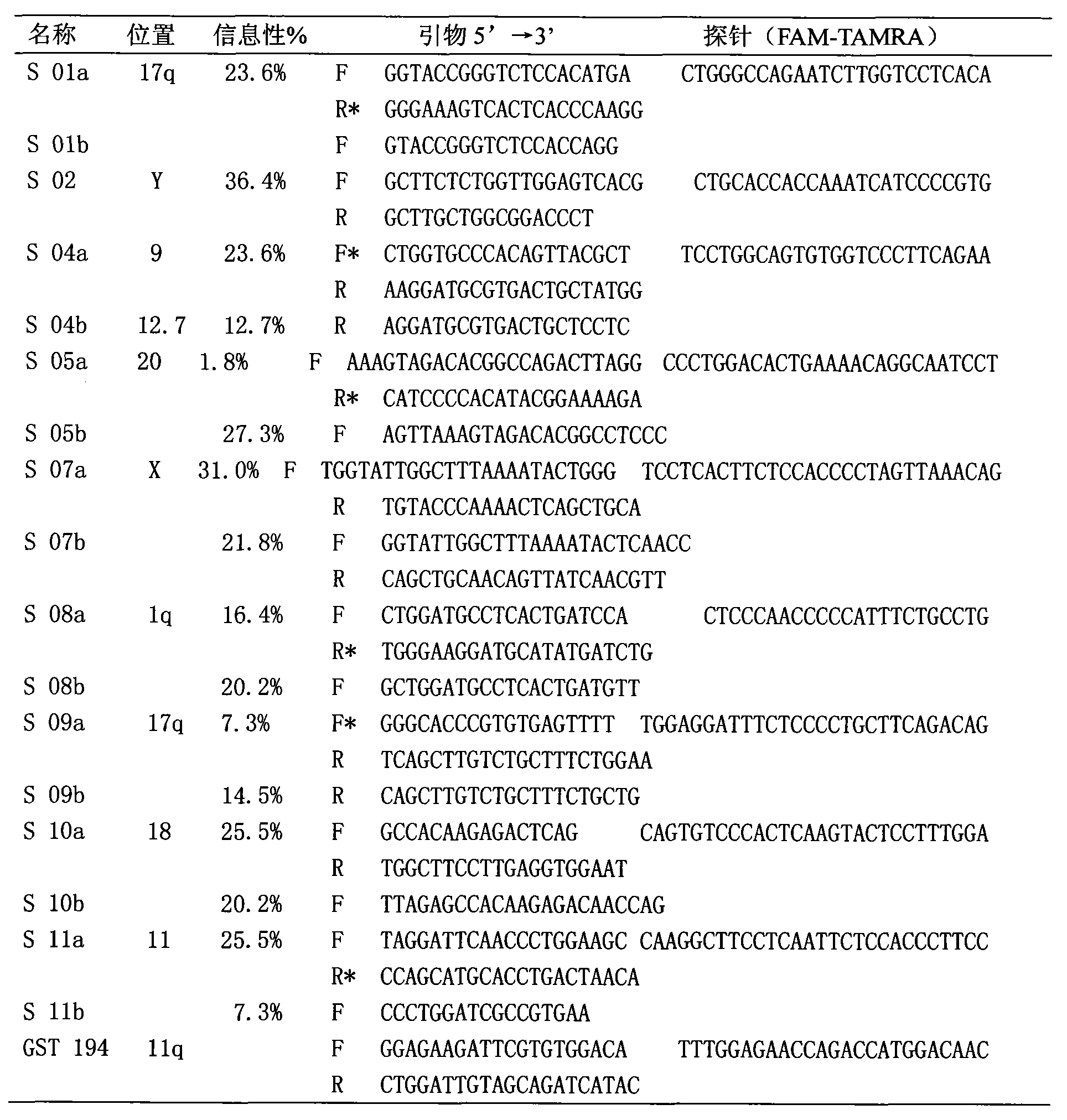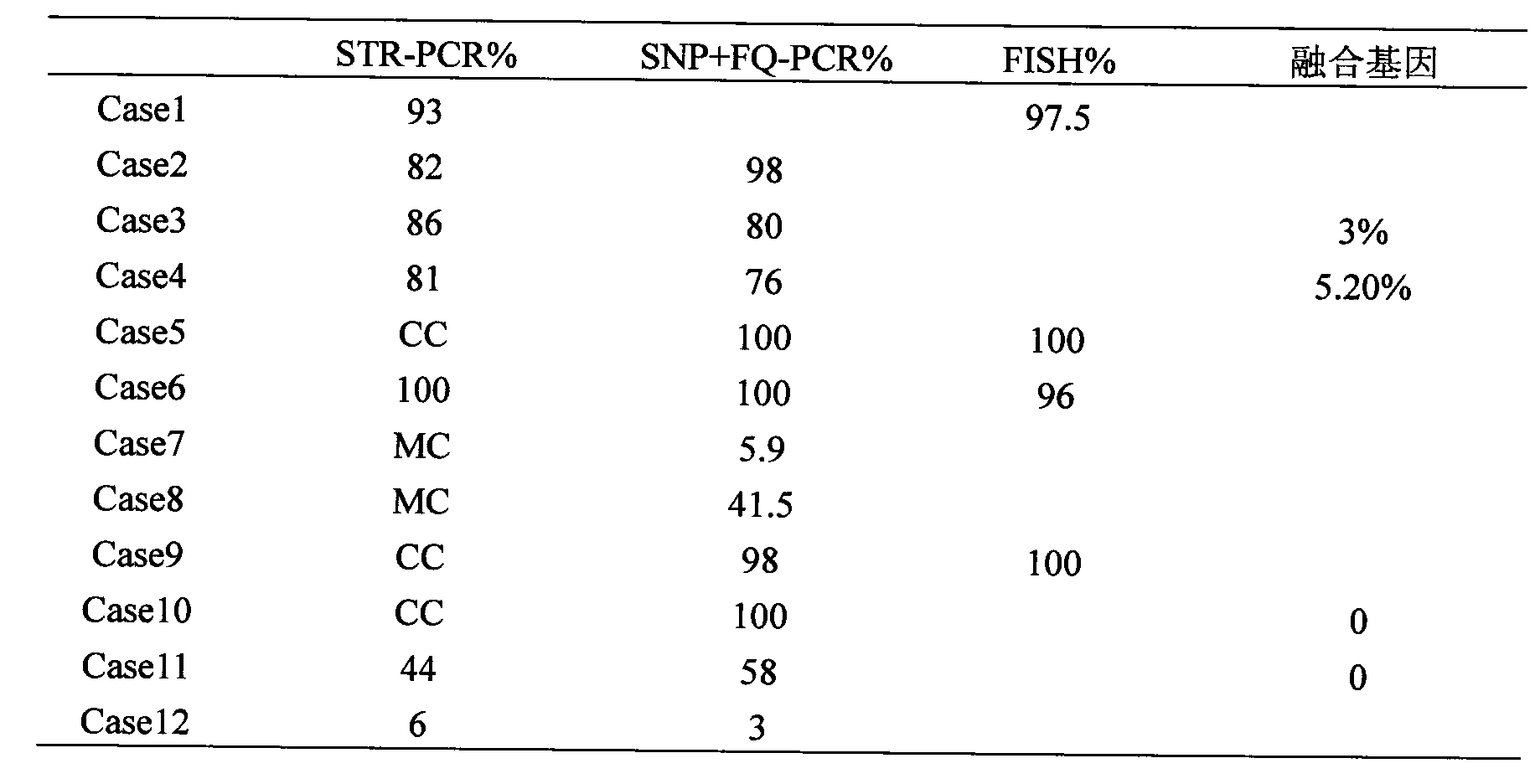Method for detecting the chimerism rate of recipients after allogeneic hematopoietic stem cell transplantation
A hematopoietic stem cell and allogeneic technology, applied in the field of molecular biology, can solve the problems of complicated operation, reduce experimental stability, increase detection cost and time, etc., and achieve the effects of high sensitivity, high clinical application prospect, and low detection cost.
- Summary
- Abstract
- Description
- Claims
- Application Information
AI Technical Summary
Problems solved by technology
Method used
Image
Examples
Embodiment Construction
[0027] 1. Specimen processing and genomic DNA preparation:
[0028] 1.1 EDTA anticoagulated blood or bone marrow specimen collected by Cracked Red → add 2-3ml Cracked Red Solution (NH 4 Cl (1.5M) 80g, KHCO 3 (100nM) 10g, Na 4 EDTA (10nM) 3.7g, adjust the pH value of the solution to 7.2-7.4, add deionized water to make the volume to 1L, when preparing the working solution, dilute the stock solution 10 times before use)→repeatedly invert and mix→stand for 5min →Centrifuge at 1200rpm for 5min→discard the supernatant, add lysing red solution again and repeat once→add PBS2-3ml to wash twice and centrifuge to collect white blood cells.
[0029] 1.2 Genomic DNA extraction Genomic DNA (U-gene, Anhui) was extracted using the conventional salting-out method of the kit, and the purity and concentration of the DNA was measured by a spectrophotometer. spare. Cells with extremely low numbers were extracted using the Chelex-100 (Bio-Rad) method (see "Chelex-100 One-step Rapid Extraction ...
PUM
 Login to View More
Login to View More Abstract
Description
Claims
Application Information
 Login to View More
Login to View More - R&D
- Intellectual Property
- Life Sciences
- Materials
- Tech Scout
- Unparalleled Data Quality
- Higher Quality Content
- 60% Fewer Hallucinations
Browse by: Latest US Patents, China's latest patents, Technical Efficacy Thesaurus, Application Domain, Technology Topic, Popular Technical Reports.
© 2025 PatSnap. All rights reserved.Legal|Privacy policy|Modern Slavery Act Transparency Statement|Sitemap|About US| Contact US: help@patsnap.com



